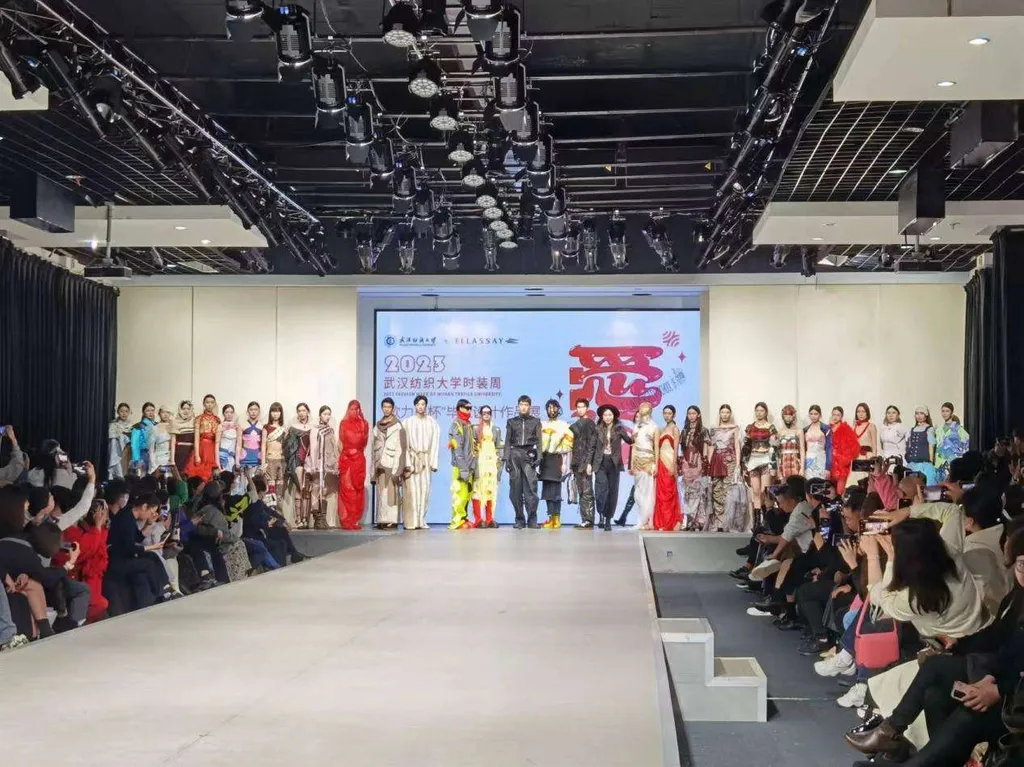In the ever-evolving world of fashion and textiles, a groundbreaking study led by Lisha Lu from the School of Fashion at Wuhan Textile University in China is set to revolutionize the way knitwear patterns are designed. Published in the *Journal of Engineered Fibers and Fabrics* (which translates to *Journal of Engineered Fibers and Fabrics* in English), this research introduces a parametric design approach that promises to streamline the pattern design process for whole garment knitwear, potentially reshaping the industry’s landscape.
Pattern design is the backbone of garment creation, serving as the blueprint for virtual display, simulation, and production. However, the current methods come with significant limitations. “Designers often have to create patterns manually when venturing beyond the basic styles offered by computer-aided design (CAD) systems,” Lu explains. This manual process is not only time-consuming but also heavily reliant on the designer’s expertise, posing a substantial barrier to the broader application of whole garment knitting technology.
The challenge doesn’t stop there. Current design systems also struggle with pattern size modifications. When specifications fall outside the predefined ranges, each pattern piece must be individually adjusted, a labor-intensive and error-prone process. Lu’s research addresses these challenges head-on by proposing a parametric design approach based on graph theory. This method enables rapid pattern creation for any style compatible with whole garment technology, significantly reducing reliance on pattern libraries and manual expertise.
The corresponding design system, developed using C++ in Visual Studio 2022, offers precise and flexible control over pattern size adjustments. This advancement is a game-changer for the industry, enhancing the potential for personalized and customized garment production. “The parametric design approach effectively overcomes the limitations associated with traditional modification methods,” Lu notes, highlighting the system’s ability to adapt to various design needs swiftly.
The commercial implications of this research are substantial. By automating and simplifying the pattern design process, fashion brands can reduce production times and costs, fostering a more agile and responsive supply chain. This efficiency is particularly crucial in an era where consumers increasingly demand personalized and sustainable fashion options. The ability to quickly adapt patterns to different sizes and styles without manual intervention can also reduce waste, aligning with the industry’s growing focus on sustainability.
Moreover, this innovation opens up new avenues for creativity. Designers can explore more complex and unique styles without the constraints of predefined pattern libraries. This creative freedom can lead to innovative designs that cater to niche markets, further driving the demand for customized knitwear.
As the fashion industry continues to evolve, the integration of advanced technologies like parametric design will be key to staying competitive. Lu’s research is a testament to the power of innovation in addressing long-standing industry challenges. By leveraging graph theory and modern software development tools, this study paves the way for a more efficient, flexible, and creative approach to knitwear pattern design.
The implications of this research extend beyond the fashion industry. The principles of parametric design and graph theory can be applied to other sectors, including automotive and aerospace, where precise and adaptable design processes are equally critical. This cross-industry potential underscores the broader impact of Lu’s work, highlighting its relevance to various fields.
In conclusion, Lisha Lu’s research represents a significant leap forward in the field of knitwear pattern design. By introducing a parametric design approach, she has addressed critical industry challenges and opened up new possibilities for creativity and efficiency. As the fashion industry continues to embrace technological advancements, this innovation is poised to play a pivotal role in shaping the future of garment production. The publication of this research in the *Journal of Engineered Fibers and Fabrics* further solidifies its importance, offering a valuable resource for professionals and researchers alike.

